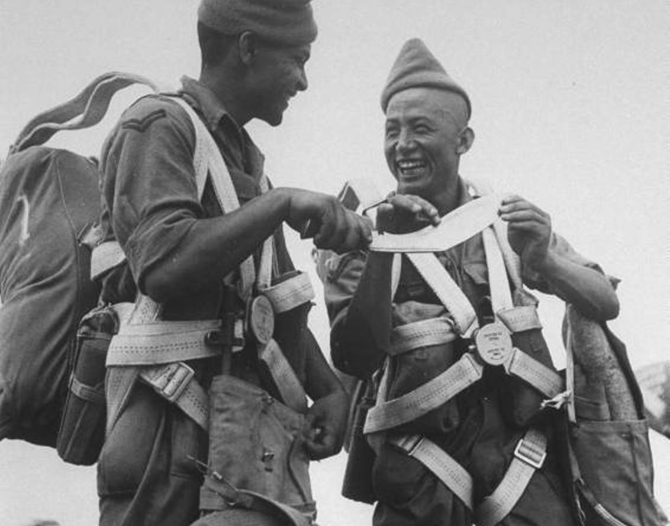The newspaper alternatively offered sticks and carrots: warnings to those going against development alongside pleas to rebels to remember that they
are part of the Myanmar state, and that those who agree to support state policies can come to the negotiation table.
Let me admit it right here: I am not one of those who go seeking adventure. I was in Myanmar to find out more about the history, culture and life of the Nepali community there. If fighting was
happening exactly where I was headed, perhaps I should not go. Unlike many of my friends, I am not a conflict junkie. And while getting their heads broken open with a policeman’s baton during protest marches in Nepal’s democratic movement was a badge of honour for many of my friends, I tend to be more cautious. Following my mother’s advice, I tend to save my brain cells for other activities.
Precisely as planned, however, I did fly to Myitkyina the next morning. The $308 ticket felt exorbitant, but I had already planned this for months so there was no possibility of backing down. I was excited to see the Gorkhali gompa [a remote Tibetan monastery], described to me in great detail by the Mahayana Buddhist followers in Pwe Oo Lin. I was also excited to meet some of the estimated 300,000 people of Nepali origin who lived in Kachin state. With villages named Rampur, Sitapur and Radhapur, I had a feeling I was going to see a lot more of Nepal in Myitkyina than I had planned. Of course, with my usual lack of planning I was carrying no phone numbers with me—only a sense that everything would turn out right.
Myitkyina is almost 1,500 km from Rangoon. In the fresh green air, much of the oppressive gloom of Rangoon city falls away. People do not look away with shuttered faces—over here, they look at you with a smile and an open face. As I looked around the verdant greenery and the gently dilapidated buildings, I wondered how the Nepalis had gotten here in the first place. Later, people tell me that most Nepalis arrived with the British during Second World War to fight the
Japanese. The Allies won. The Gurkha regiments stayed behind, even after the end of the war. Others came to trade even before the First World War—one tradesman in the bazaar told me his father came to Burma because it was the land of plenty. His father noticed that children in Calcutta picked rice out of the gutter to eat, but in Rangoon they threw away platefuls of rice from the eatery he sat in on his first day. That is how he knew this land was a rich land.
Nepalis also built the road in this town, I was told. “My father worked on that road,” a Nepali tells me later. “That road” is the Ledo Road, which goes from Ledo, in Assam, to Kunming in Yunnan. The Ledo Road was built as an alternative route by the British to carry supplies to the Chinese after the Japanese troops cut off the Burma Road in 1942.
I need not have worried about knowing not a single soul in Myitkyina as I descended from the airplane. Waiting outside the airport was Bijay Adhikari. Mr Adhikari worked the airport route as a taxi-driver. At first I mistook him for an Afghan—possibly one who had been left behind in this remote outpost, the detritus of some war of the past. Then he asked me, “Which country are you from?” And when I said, “Nepal,” he said, “I am Nepali too. You don’t worry. I’ll take you
everywhere.”
The first stop in our itinerary was Bijayji’s home. His wife sat in front of the Hare Krishna shrine in their home, her hands folded, the picture of propriety and devotion. The Hare Krishnaites, known only for their hippie oddities in the US, have apparently acquired a popular following of diasporic disciples from Hindu backgrounds in countries such as Burma. Cut off from their religious traditions and hungry to learn more about their religious heritage, these disciples provide a fertile following.
Bijayji’s wife tells me their three children are all working in Thailand—the son a tailor in Phuket, the two daughters working in retail outlets in Bangkok. “Don’t people in Myanmar miss their children?” I asked, and immediately realized my mistake. Bijayji’s wife looked sad and she glanced down. Almost all of the younger generation of working age has migrated to Thailand. “Our villages are empty of young people,” Bijayji said.
“Your son must make a lot of money in Phuket, then,” I said. “I met a lot of Nepali tailors who are doing very well in Thailand. They own their own homes and businesses.”
Bijayji shook his head and replied: “The tailoring business boomed for those who went about a decade ago. In the current economic climate, it is difficult for new people to establish themselves in Phuket.” He said his daughters and son planned to send back their grandchildren so the grandparents could look after them while they worked in the big cities.
Bijayji then took me to meet his 80-year-old mother. We chatted for a while, and I felt an immediate affinity with the old woman.

